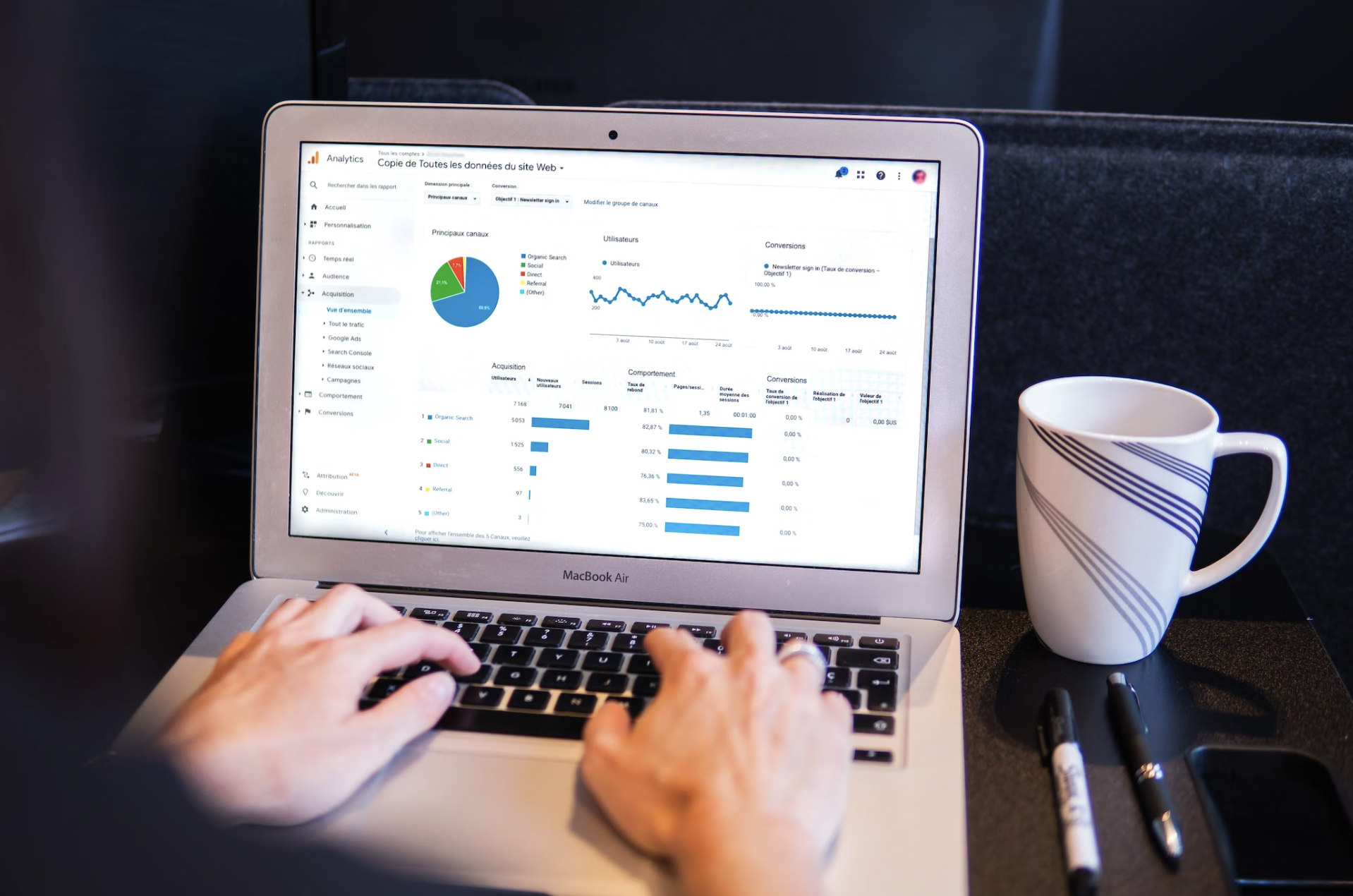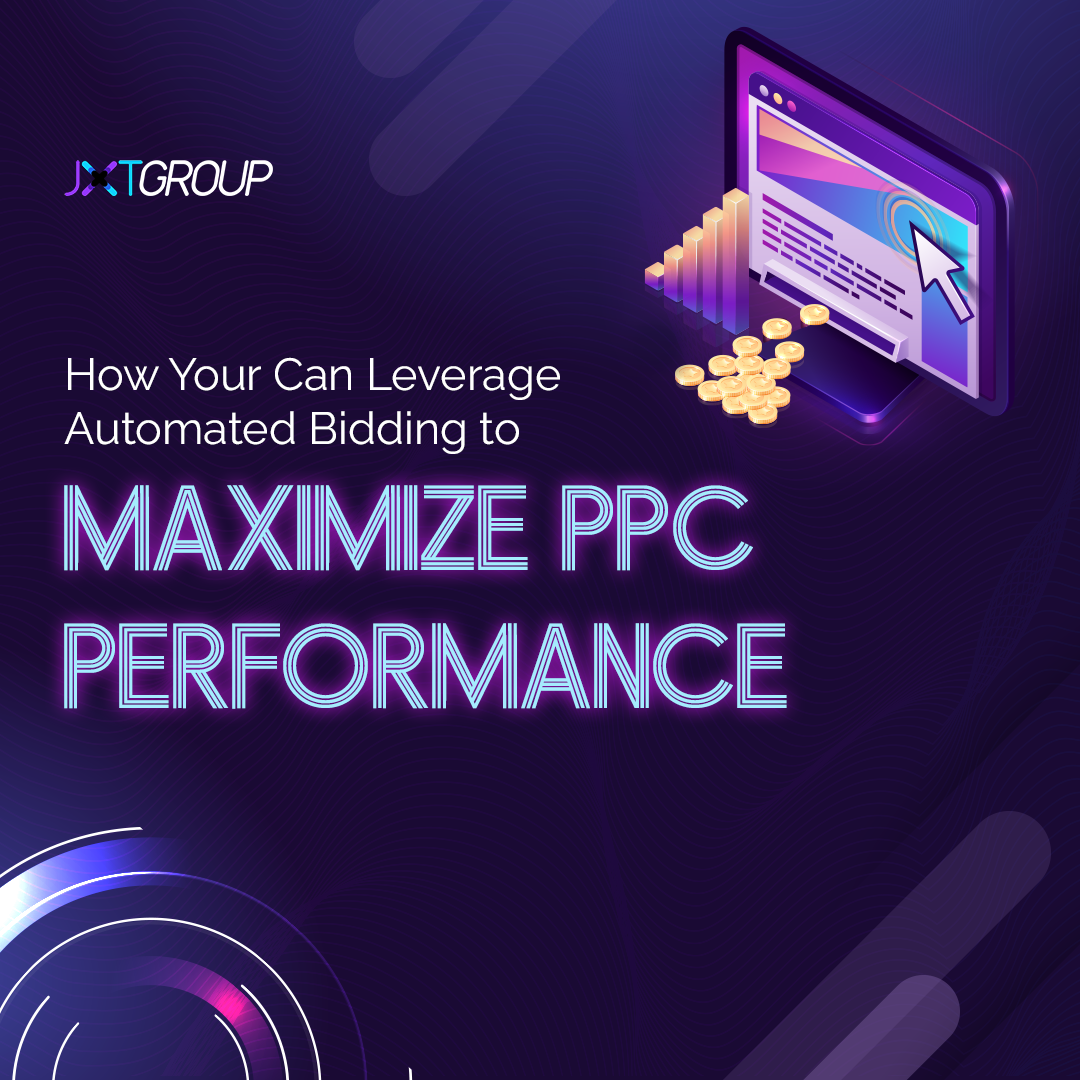In June 2022, Menachem Ani, Founder / CEO of JXT Group had the opportunity to speak at SMX Advanced, one of the industry-leading events for search marketing.
In his presentation “Leveraging Automated Bidding for Maximum PPC Performance”, Ani shared strategies and tips to improve your automated campaigns based on his experiences managing Google Ads campaigns since 2003.
Whether you’re taking advantage of Google’s new Performance Max campaigns or considering getting into smart bidding, there are both pros and cons to the different automated campaign types that are all dependent on your particular business goals.
Some of the key topics covered in Ani’s presentation included:
- How to structure Performance Max campaigns to actually maximize performance.
- How to create effective asset groups.
- What you need to know about data reporting capabilities to make the most of your campaigns.
Here were some of the most valuable takeaways:
 Smart Bidding
Smart Bidding
“Smart bidding” for Google Ads is defined as a subset of automated bid strategies that “use machine learning to optimize for conversions or conversion value in each and every auction—a feature known as ‘auction-time bidding’. Target CPA, Target ROAS, Maximize conversions, and Maximize conversion value are all Smart Bidding strategies.”
According to Ani, with these campaigns, you’ll give up some level of control but gain efficiency and performance.
This chart shows which bid adjustments are still available with Smart Bidding:
Here are some best practices Ani suggested for Smart Bidding:
- Avoid setting very low daily budgets
- Be patient – give it 2-4 weeks to gain momentum
- Set realistic performance goals
When you’re first starting a smart bidding campaign, the system needs data in order to learn what’s driving clicks and conversions. As the system is learning, you want to be “eyes on, hands-off.”
Inputs & Outputs
As the advertiser, it’s your role to provide the machine with the data points it needs to perform well in the real-time auction process. Ultimately, automated bidding can and will outperform manual bidding, but as with most things in life, “you get what you give.” It all comes down to testing and tracking.
Depending on your business goals and set-up, here are some metrics you might want to track:
- Phone Calls
- Form Submissions
- Live Chats
- Online Sales
When launching new campaigns, Ani recommended starting with manual CPC bids or maximize clicks. This is because, again, the algorithm needs data to know who the right customer is for your campaigns. This is a way to minimize wasteful spending when you’re just getting started.
Once you’ve tracked enough manual conversions, then you’ll want to switch to smart bidding – which strategy is best will depend on your business. For example:
- A service business probably wants to use Target CPA and maximize conversions.
- An ecommerce company probably wants to maximize conversion value and Target ROAS.
- If you’re running a brand campaign, you might want to Target Impression Share – usually the goal here is to make sure the user doesn’t end up on your competitors’ sites.
Once you’ve launched a campaign, you don’t want to make too many quick or dramatic changes so that the system can collect sufficient data – Ani’s general recommendation is to only make incremental changes of 5-10% to your KPIs at the start. However, you do want to monitor and make changes to keywords to drive relevant traffic.
 Lead Generation Vs. eCommerce Campaigns
Lead Generation Vs. eCommerce Campaigns
If the input is flawed, the output will be flawed.
For lead generation campaigns (where smart bidding doesn’t have a revenue value), you want to make sure you’re tracking good leads. For example, you don’t want the system to optimize for terms that seem relevant, but actually aren’t – for example a commercial trucking insurance campaign that was matching for “commercial insurance” and “auto insurance” searches.
With eCommerce, the system automatically gets more data about actual sales generated and the dollar amount of those sales. For example, here the Broad Match function will learn which keywords might be driving traffic but not sales, and adjust accordingly.
Performance Max
This is Google’s newest, most advanced campaign type – so it’s getting significant attention and prioritization. For advertisers, t’s important to know Performance Max campaigns will supersede Shopping, Search, Display and other campaigns within your account and will pull traffic away from those campaigns (the one exception is Exact Match Keywords in Search campaigns).
The set-up is different for Performance Max campaigns because these do bring together Dynamic Search Ads, Responsive Search Ads, Smart Shopping, and Discovery all into one. You’ll want to structure your campaigns with inputs for:
- Asset Groups (Ad Groups)
- Audience Signals
- Ad Copy / Creative
- Listing Groups (Product Groups)
One thing to know is that Performance Max will create a dynamically generated video for you if you don’t provide one, and it’s often not ideal – so Ani definitely recommended uploading your own video if you want to get the most out of Performance Max.
With Performance Max for lead generation, you do want to set up offline conversion tracking in order to provide the system with guidance to improve your lead quality. For eCommerce, Smart Shopping will be rolled into Performance Max later this year, so you want to connect and optimize your data feed in the Merchant Center with as much detailed, keyword-rich information as you can provide.
While Performance Max campaigns are mostly automated, there are levers you can control (and want to optimize) including:
- Budget (ideally 5X your CPA target)
- CPA / ROAS Targets
- Audience Signals
- Ad Copy / Creative
- Listing Groups (for eCommerce)
One of the current limitations of Performance Max is its reporting capabilities. However, there are some workarounds.
For example, if you move to the All Campaigns Manager you can find data for which devices drive traffic, which days generate the most sales etc. for all your campaigns, including Performance Max. You can also add filters for specific campaigns.
Additionally, if you go to the Landing Pages tab, you can filter for certain campaigns and get a better understanding of where traffic is coming from. For example, if you have URL Expansion turned on, you can check if traffic being directed to different pages on your site that don’t convert, such as your home page, and turn it off.
 Your First-Party Data
Your First-Party Data
The more data you can feed Google’s machine learning, the better your campaigns will run, so it’s important to collect and import your own first-party information regarding offline conversions and offline sales data.
You can add connections with Salesforce or Zapier to automatically import and integrate your sales data, and there are also manual options too. In addition to sales information, you also want to import customer lists so Google knows your email subscribers, leads, previous customers, and high-value customers. With this information, you’ll be able to target these specific users as well as lookalike audiences.
——————————————————————————————————————————————
Was this helpful? For more insights, you can watch the full recording of Ani’s presentation. In addition, you can view the recorded Q&A session in which Ani answered questions including:
- Is the recommended 5X budget based on the daily budget?
- What happens if your budget is too low?
- Does Target Impression Share on brand terms push CPC bids way up?
- What automated bidding strategy do you recommend for a small budget?
- Would you use manual CPC / maximize clicks when resetting a campaign?
- How do you determine whether to use manual CPC or maximize clicks for a new campaign?
- Are you able to use Target Impression Share to show above your competition?
- What is the cost / benefit analysis for sharing your first-party data with Google?
- For industries that can’t use customer lists, what are the alternatives to provide Google with valuable data?
- What are your structure and segmentation strategies for Performance Max?
- With Performance Max, can you only utilize one conversion goal for an entire campaign?
- How would you handle introducing a new landing page into an existing campaign?
- How do you best use value-based bidding for a webinar?
- And more!
Do you have more questions on how to leverage automated bidding? Would you appreciate help and support from an expert partner to manage your Google Ads campaigns? If so, find out more from our expert team here at JXT Group. As a Google Premier Partner, we’re recognized among the top 3% of partners with Google.
You can reach us by phone at 718-690-7302 or fill out our online inquiry form to get in touch.

